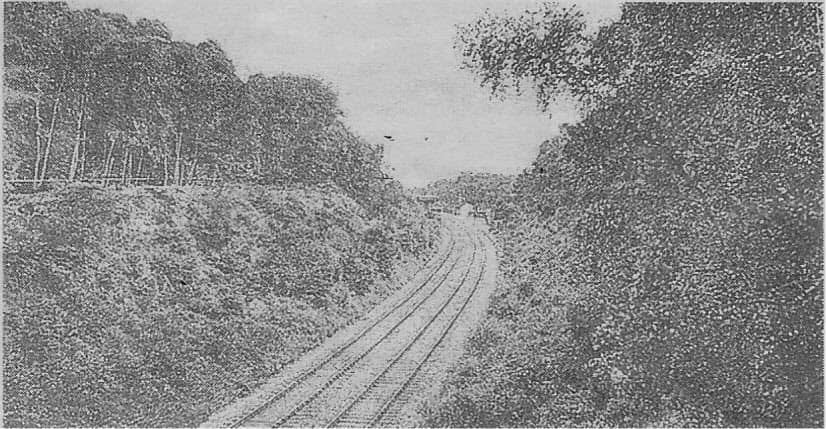
A quarter of a century after it opened, there were people living in Sutton Coldfield who were still put out by the building of a railway line across Suttoil Park.
Their favourite word for describing the line was 'eyesore', but they were always happy to expand on this with other choice words and phrases: 'atrocious', 'unspeakable', 'an everlasting disgrace'.
When a plan for a rifle range in the park was discussed in 1905-6, one newspaper correspondent asked, 'Could it not be along the railway bank or some part that is already vulgarized?'
In 1906 there were 35 fires in the park, and 21 of them were attributed to sparks from the steam engines.
The town council pressed the Midland Railway for compensation.
There had been strong opposition to the building of the railway line when the proposal was first advanced in 1871. The leading figures in this opposition were the rector W.K. Riland Bedford, the incumbent of St. Michael's E.H. Kittow, the physician James Johnstone and the edge tool manufacturer A.W. Wills.
Meetings were called, petitions were signed, and these men fought the proposal all the way up to the House of Lords. There was, however, also support.
Though he did not speak publicly on the matter, James Horsfall, who owned Penns Hall, was eager to see a railway line built. Horsfall was a wire manufacturer and jt was his business that had manufactured the armouring Wire for the famous Atlantic cable of 1865-6. An immensely rich man, Horsfall had been buying land in Walmley and believed that a railway station in the area would make new houses more attractive to purchasers. Several members of the corporation were professionally and financially involved in the plan for the new line. The warden R.H. Sadler and T.S. Eddowes offered legal advice to the railway company. Supporters of the scheme outnumbered its opponents on the committee appointed by the corporation to appraise the situation.
One of these men was the farmer John Wiggan who believed the railway line 'would do the park no harm but on the contrary would fill up the bogs.' Sadler would defend this controversialline to the end of his life.
For the full story of the building of the Sutton Park railway line see Glimpses into Sutton's Past Part II: 1851-1885 by Stephen Roberts.
Associate Professor
Stephen Roberts